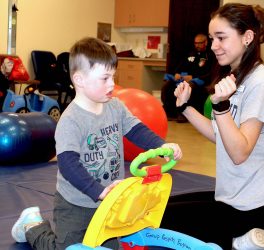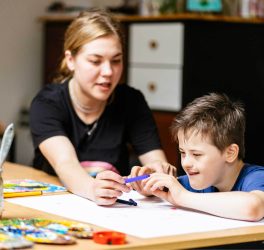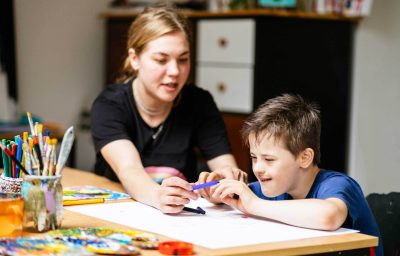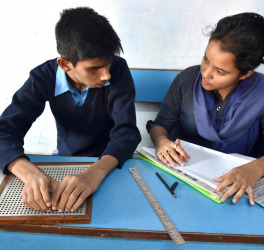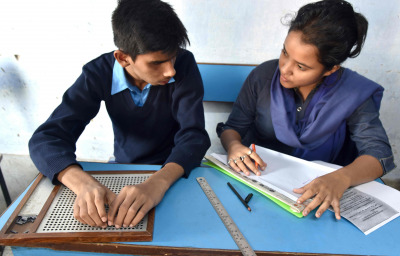
A recent study by Christine Holyfield, assistant professor of communication disabilities at the University of Arkansas, provides new clinical and educational insight into supporting school-age children with multiple disabilities. The study was published in the journal, Augmentative and Alternative Communication.
Many children with multiple disabilities — children experiencing limitations in cognition as well as motor and/or sensory functioning — face significant challenges at school. Often, children with multiple disabilities demonstrate little engagement with the people and objects in their environment. This creates major difficulties for learning and for building communication and language.
The new study evaluated an intervention created by Holyfield to promote a number of social gaze behaviors in a small group of school-age children with multiple disabilities. Social gaze was targeted in the intervention as it represents both engagement with people and objects and also early forms of communication. For these reasons, social gaze is an important skill for children to build to support communication and language development. The intervention used motivating contexts, rich communication partner input and scaffolding, and responsivity to target the social gaze behaviors.
All participating school-age children with multiple disabilities demonstrated increases in social gaze behaviors in response to the intervention. The number of children who participated in the study was small, so more research is needed to evaluate the intervention approach. However, the study reports promising findings. This is the first published study directly targeting social gaze behavior after the early intervention years. Therefore, the study provides evidenced-based support that intervention can successfully increase these behaviors in children later than has previously been documented.

